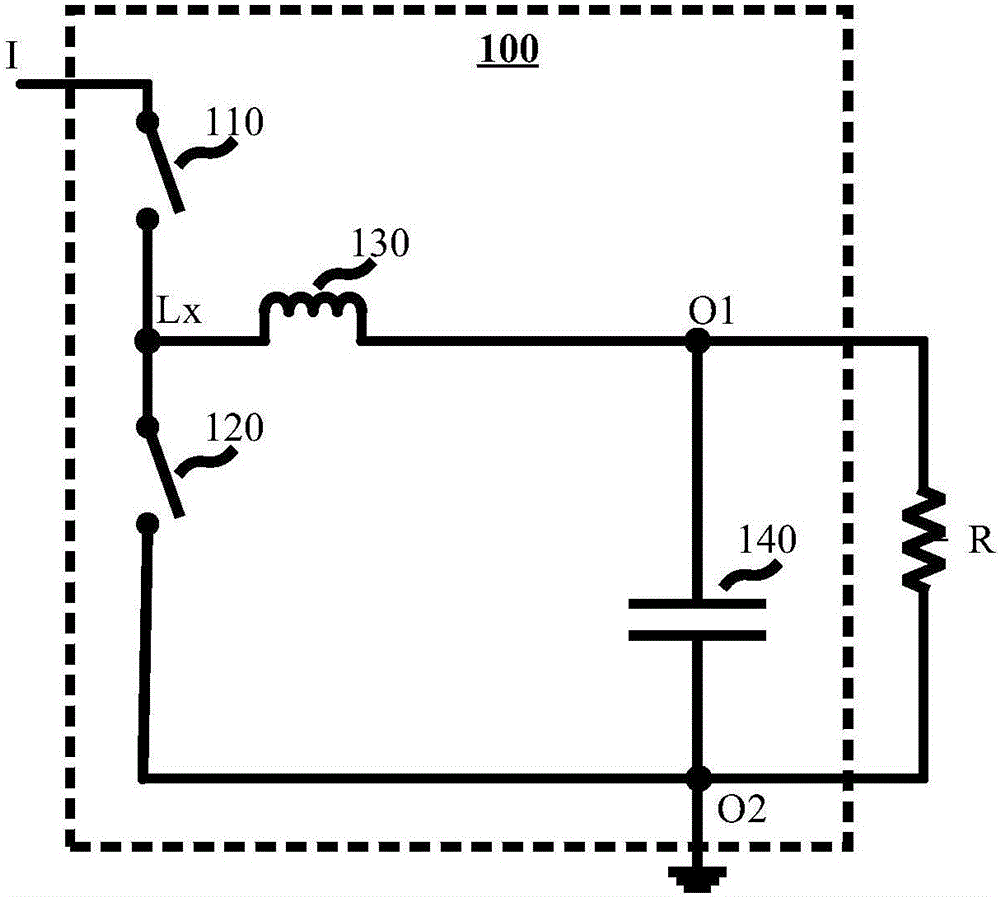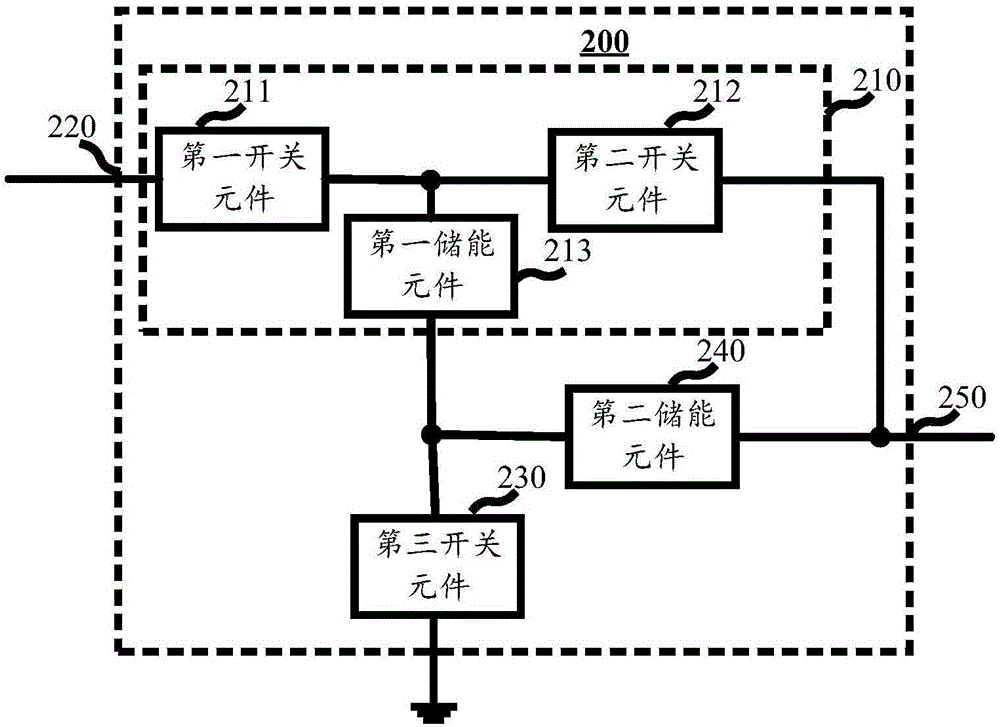Voltage converter and control method therefor and voltage conversion system
A voltage converter and voltage technology, applied in the circuit field, can solve problems such as energy loss and temperature rise, and achieve the effect of reducing circuit loss and improving energy conversion efficiency
- Summary
- Abstract
- Description
- Claims
- Application Information
AI Technical Summary
Problems solved by technology
Method used
Image
Examples
Embodiment Construction
[0079] The technical solution in this application will be described below with reference to the accompanying drawings.
[0080] It should be understood that the embodiments of the present invention may be applied to DC to DC voltage conversion scenarios. Specifically, the embodiment of the present invention may be applied to a step-down converter, such as a BUCK circuit, and may also be applied to a boost converter, such as a Boost circuit, which is not limited in this embodiment of the present invention.
[0081] figure 1 A typical BUCK circuit 100 is shown, which can be used to provide the load R after step-down conversion of the input voltage. Such as figure 1 As shown, the BUCK circuit 100 includes: an input terminal I, a power transistor switch 110, a power transistor switch 110, an inductor 130, a capacitor 120, and output terminals O1 and O2, wherein the inductor 130 and the capacitor 120 form a filter circuit. Specifically, one end of the power tube switch 110 is co...
PUM
 Login to View More
Login to View More Abstract
Description
Claims
Application Information
 Login to View More
Login to View More - R&D
- Intellectual Property
- Life Sciences
- Materials
- Tech Scout
- Unparalleled Data Quality
- Higher Quality Content
- 60% Fewer Hallucinations
Browse by: Latest US Patents, China's latest patents, Technical Efficacy Thesaurus, Application Domain, Technology Topic, Popular Technical Reports.
© 2025 PatSnap. All rights reserved.Legal|Privacy policy|Modern Slavery Act Transparency Statement|Sitemap|About US| Contact US: help@patsnap.com



